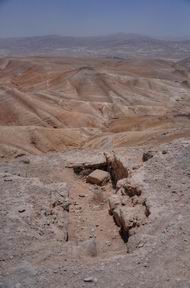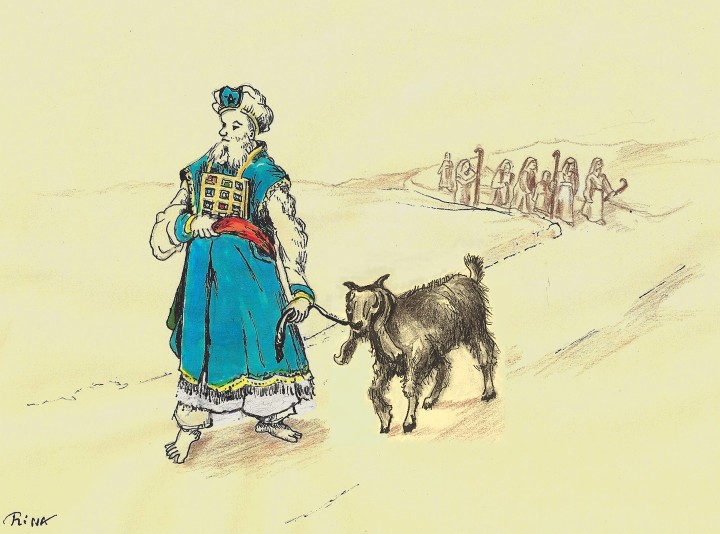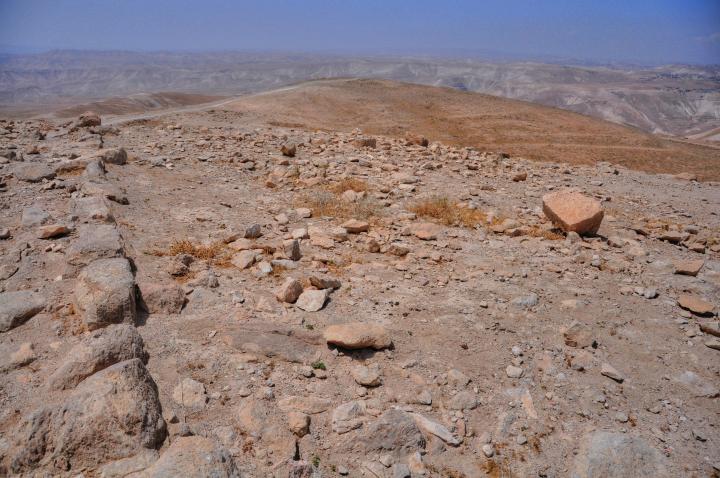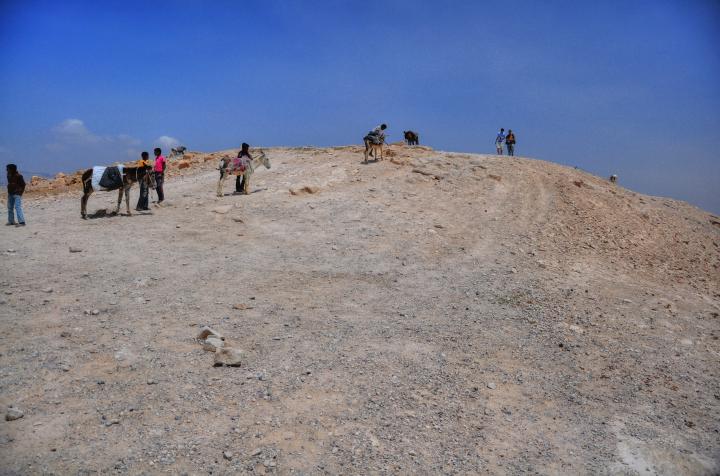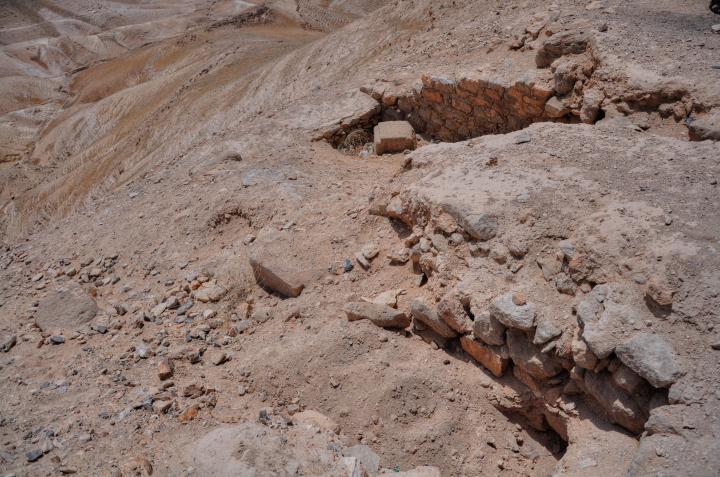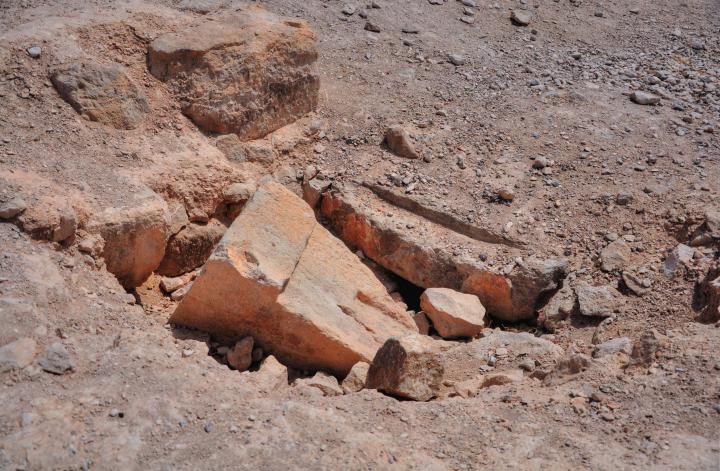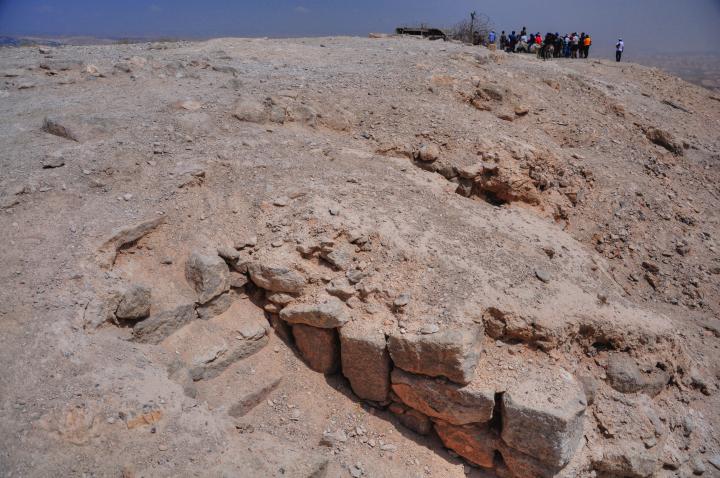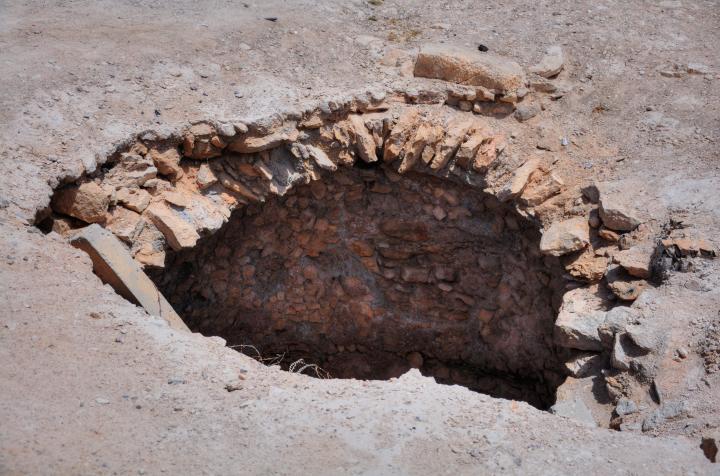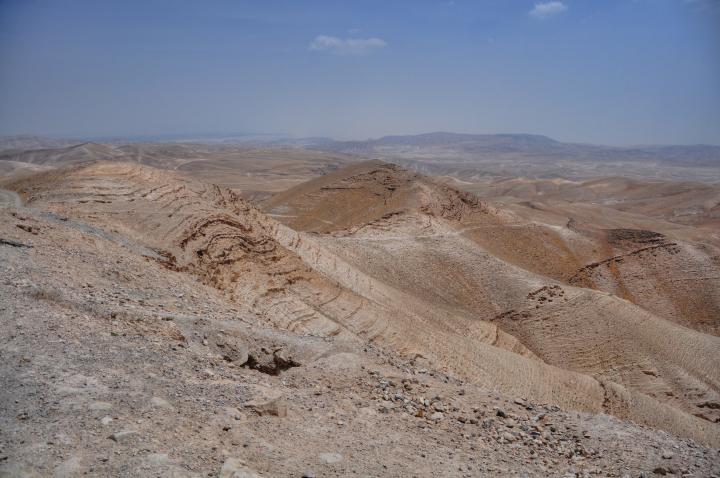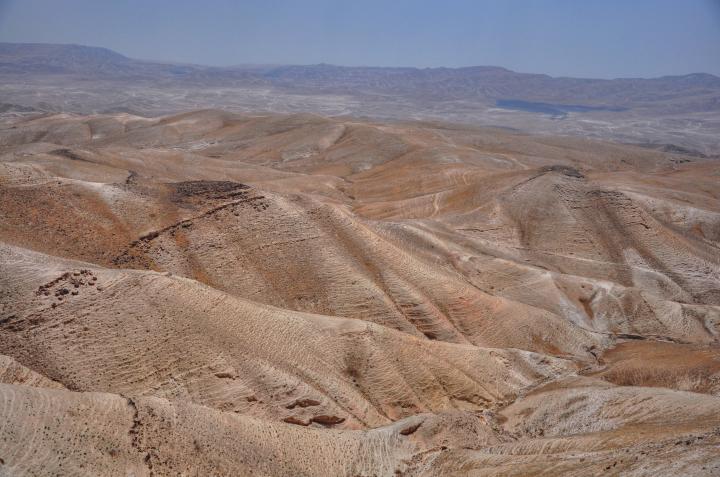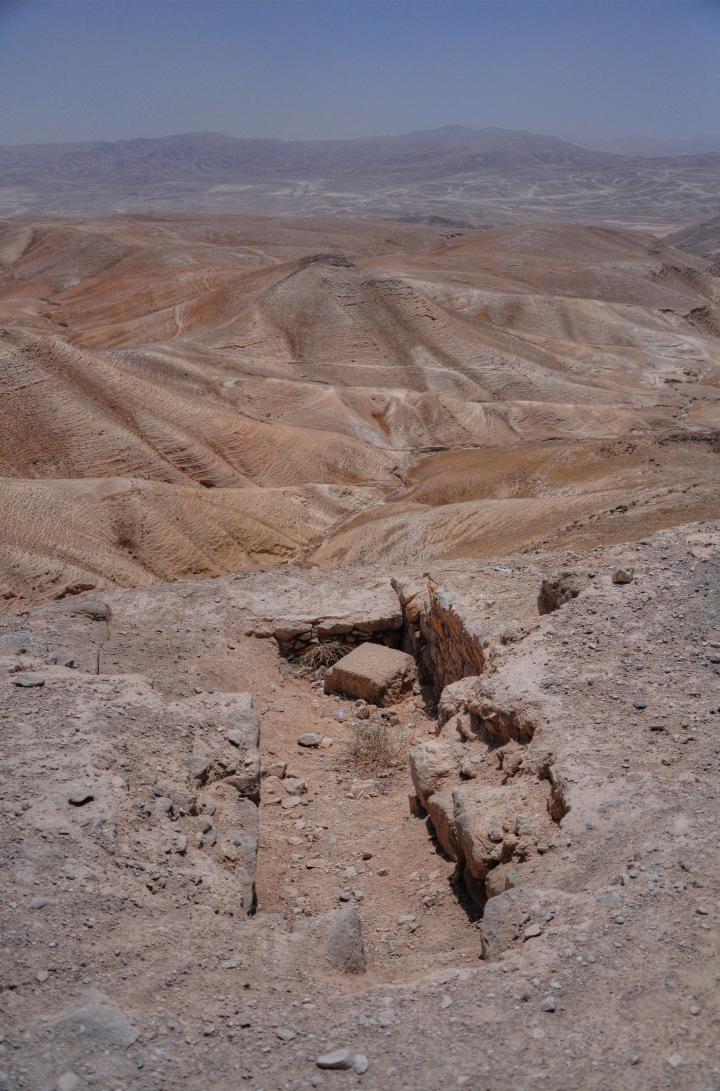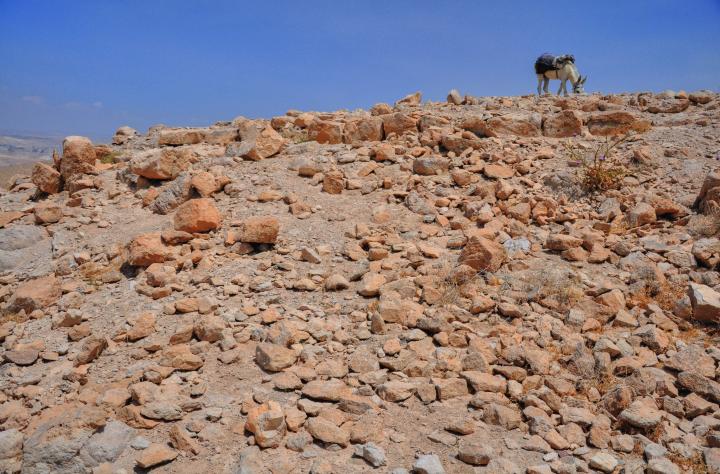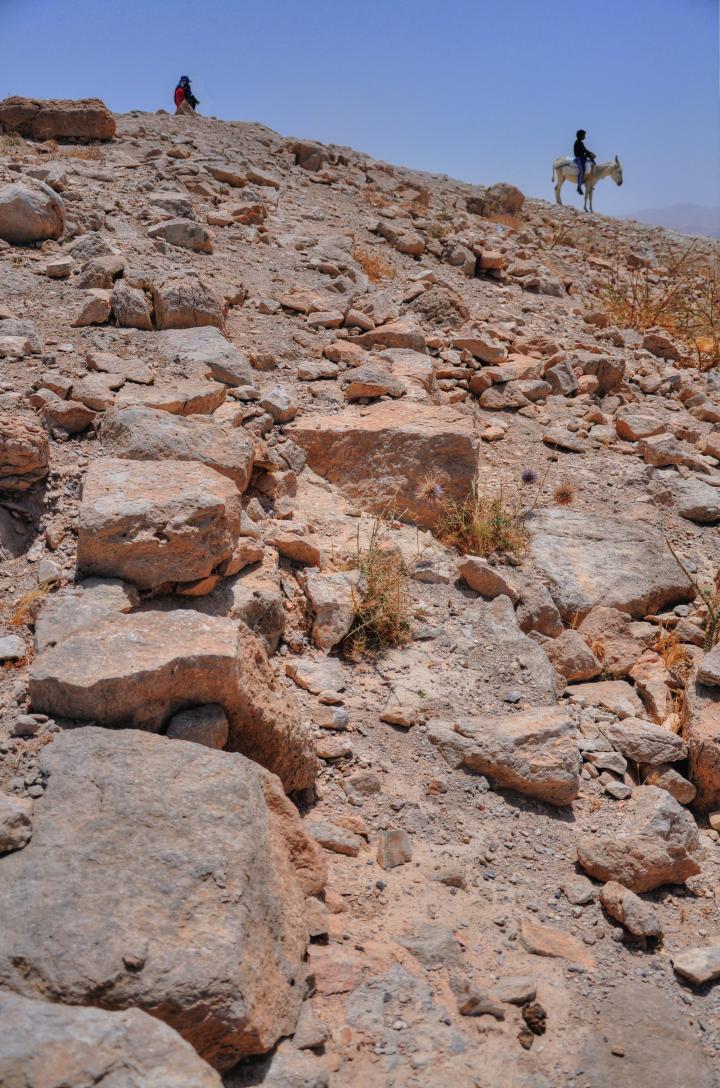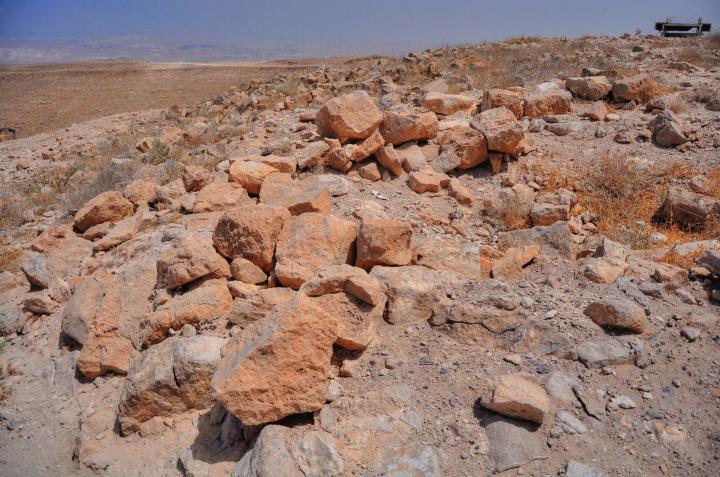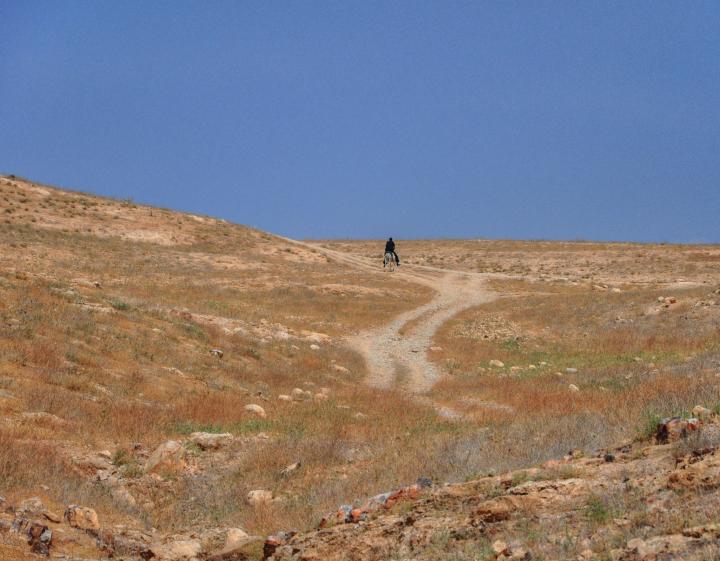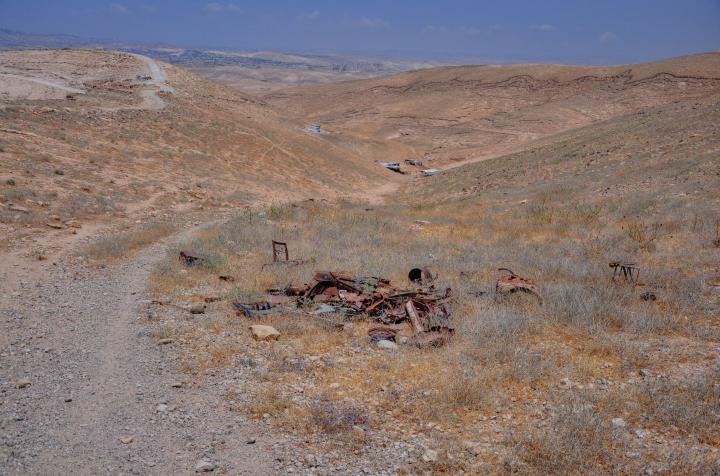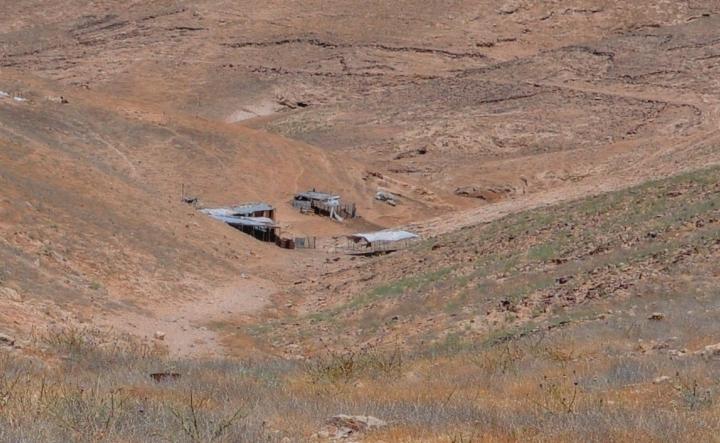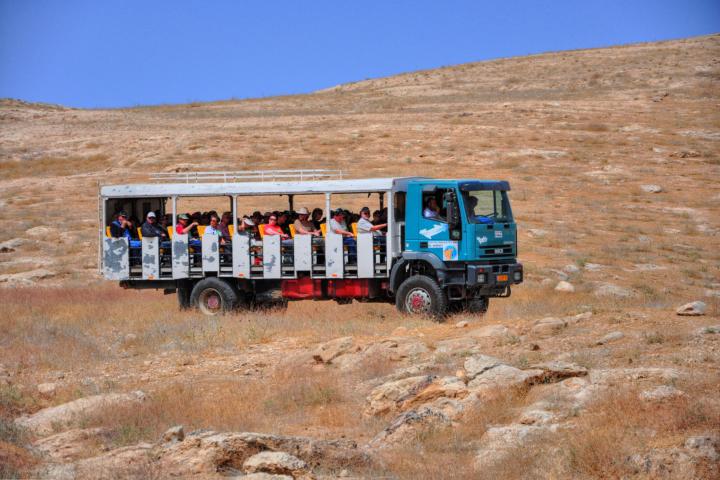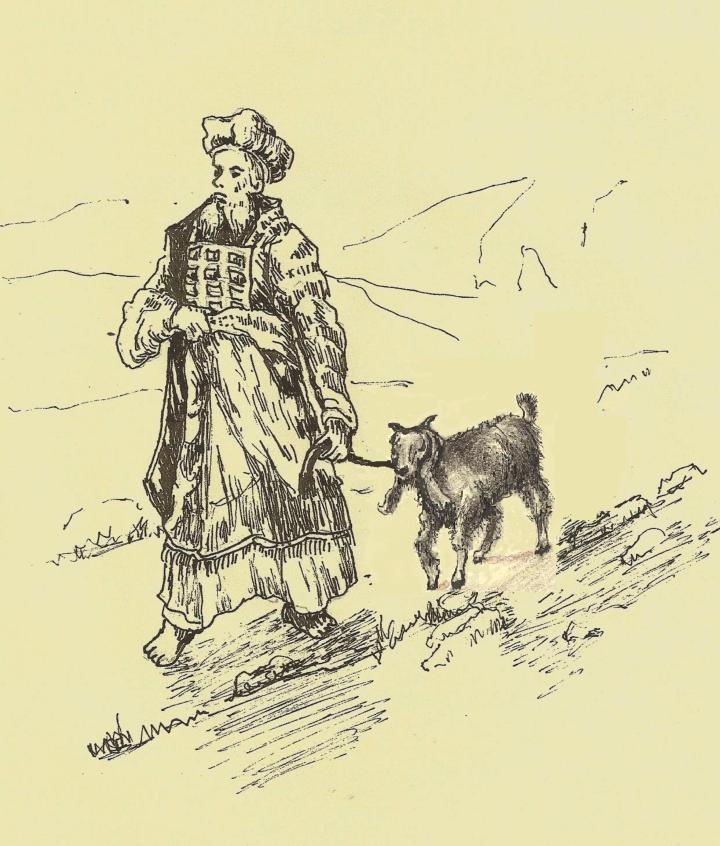High mountain in the Judean desert, site of a ruined Byzantine monastery, and probable place of the Biblical scapegoat ceremony.
Home > Sites > Judea > Jabal Munttar (‘Azazel)
Contents:
Background
Location
History
Photos
* General view
* Ruins
* Eastern slopes
* West
* Road
Biblical
Etymology
Links
Overview:
Jabal Munttar (“Mt of the Watchman”) is a high mountain in the Judean desert, overlooking the desert. On the top of the mountain are traces of ruins of a 5th C Byzantine monastery. The site may have been the Biblical place of the scapegoat annual ceremony (‘Azazel in Hebrew), where a goat was carried out from the temple to the desert and thrown away to the abyss.
Leviticus 16 10: “”But the goat, on which the lot fell to be the scapegoat, shall be presented alive before the LORD, to make an atonement with him, and to let him go for a scapegoat into the wilderness.”
Location and Aerial map:
The site is located in the Judean desert, 14 KM east-south-east of Jerusalem, near a desert road that leads from Abu-Dis to the Dead sea.
Mt Munttar is 524M above sea level – the highest peak in the area.
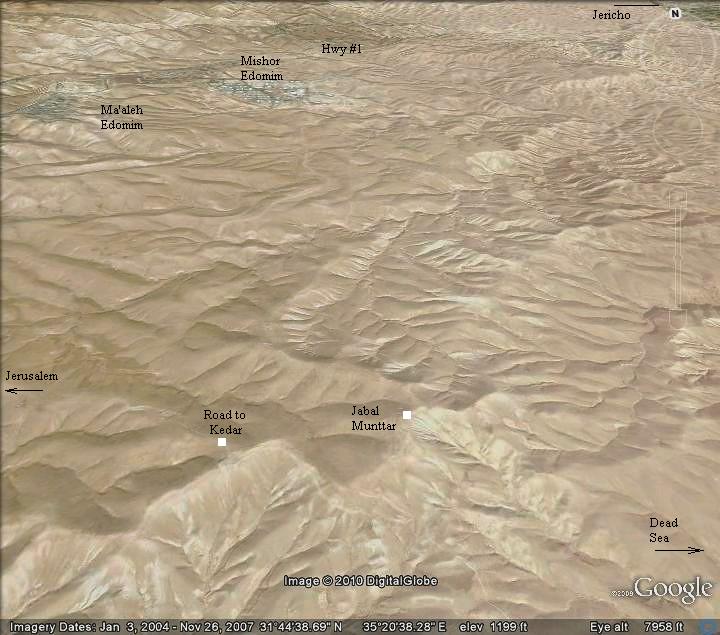
History of the place:
-
Biblical period
A Biblical tradition was to march a scapegoat from the temple to the desert and throw it away to the abyss, as part of the ceremonies of the day of Atonement. This was commanded in Leviticus 16 10: “But the goat, on which the lot fell to be the scapegoat, shall be presented alive before the LORD, to make an atonement with him, and to let him go for a scapegoat into the wilderness.” The goat was believed to carry the sins of the people placed on it, and by sending it to perish the goat would take their sins away.
Drawing of scapegoat ceremony – By Grandma Rina
The site of Jabal Munttar fits the position and description of the place and scholars identify it with the place of throwing the scapegoat down the steep hillside (called in Hebrew “”Azazel”).
The cities and roads during the Canaanite and Israelite periods are indicated on the Biblical Map below.
Map of the area around Munttar – during the Canaanite and Israelite periods (based on Bible Mapper 3.0)
-
Byzantine period
Starting in the end of the 4th century, monks started to populate the caves of the Judean desert. The Byzantine monks came here to seek the simplicity, purification and the solitude of the desert.
Aelia Eudocia Augusta (401-460 AD), wife of the East Roman Emperor Theodosius II, visited the Holy Land (438-439, 450-460). She was inspired by Euthymius “the Great” (377-473), one of the most prominent fathers of the Judean Desert Monasticism, to construct a monastery in 450 AD in this remote site.
The Eudocia monastery existed until the Arab period (7th century) and is in ruins since then.
- Modern times
The site today is deserted, and only few desert tours arrive to the site.
The area of the Judean desert is totally dry, with almost no trees and plants. Only during short winter rains the desert comes alive with low bush covering the soil, but during late spring this is already dried out, as seen in the photos.
Although the desert scenarios are alien to the modern people, its unique landscapes inspire a sort of magical atmosphere. The land, untouched by the modern world, is the closest match to the Biblical scene. Touring this barren land is like a time machine – returning you back to Biblical periods. We highly recommend that you join an organized tour to the desert and witness this yourself.
Photos:
(a) General view
The top of mountain is flat, and reached from the south side. Around the plateau is a base of a wall, which was part of the 5th century Byzantine monastery.
Click on the photos to view in higher resolution…
Few visitors to the site that manage to arrive to this remote site are greeted by a dozen of Bedouin youths who come riding on their donkeys from the tents around the area. They beg for shekels and try to sell some artifacts.
On top of the site are traces of ruins of the Byzantine monastery. On the east side are very steep slopes, as viewed in the photo below. On this precipice the scapegoat would have been thrown down the hillside.
(b) Traces of ruins
The site has not been excavated, yet in several locations on top of the hill are traces of the Byzantine ruins. These were part of the Monastery of Aelia Eudocia Augusta (401-460 AD), wife of the East Roman Emperor Theodosius II.
The monastery was erected in 450 AD by the Eudocia who visited the Holy Land (438-439, 450-460) and was inspired by St. Euthymos, one of the early monks in the Judean desert.
Among the ruins are water reservoirs which are covered by arches. These cisterns, in addition to springs found near the site, supplied the water to the monks.
(c) Eastern slopes
Great views of the Judean desert are seen on the eastern side, facing the Dead sea.
Beyond the hills of the Judean desert (the front hills in the photo below) lies the valley of Hyrkania (seen in the background). The valley is named after the Hasmonean fortress Hyrkania (Horkania). The valley overlooks the area of the Dead Sea and the Jordan Valley.
An aqueduct was constructed by the Hasmoneans from the foothills of Jabal Munttar to the fortress.
(d) Western and Southern slopes
The western and southern sides of the plateau are not as steep as the eastern side.
A base of the wall of the monastery surround these sides, and fragments of the stones from the wall are scattered around.
Another view of the western side, with a direction to the north:
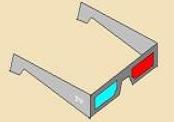
You can also see a southern view of the site with a special 3D picture. Click here to download the photo. Then, use the standard (red-cyan) 3D glasses to view it.
(e) Road to Jerusalem
A desert road connects Jerusalem to this site. In ancient times the ritual procession used the road to march the scapegoat to its fatal destiny on the high place of Jabal Munttar. The Mishna (2nd C AD books of Jewish practices) reports that along this path the faithful erected tents and booths, servicing the atonement day procession.
Today, this rugged dirt road supports only 4×4 vehicles, trucks or the Bedouin donkeys and camels.
The photo shows one of the side roads that leads to a Bedouin tent, which is located on the western side of the mountain.
A closer view of the Bedouin compound:
To reach the site, we traveled with an open Safari truck, which is equipped for driving in this rough terrain. There are several companies that offer desert tours, such as Haela-Tours.
Biblical References:
Leviticus 16, 8-10 & 22
These verses describe the practice of sending a goat to the wilderness as a “scapegoat” during the time of atonement (Yom-Kippur).
“And he shall take the two goats, and present them before the LORD at the door of the tabernacle of the congregation. And Aaron shall cast lots upon the two goats; one lot for the LORD, and the other lot for the scapegoat. And Aaron shall bring the goat upon which the LORD’s lot fell, and offer him for a sin offering. But the goat, on which the lot fell to be the scapegoat, shall be presented alive before the LORD, to make an atonement with him, and to let him go for a scapegoat into the wilderness.”
“And the goat shall bear upon him all their iniquities unto a land not inhabited: and he shall let go the goat in the wilderness.”
Drawing of scapegoat ceremony – By Rina
Etymology (behind the name):
- Jabal (also: Jebel, Jabel and Jebal)- Arabic: Mountain, hill.
- Munttar – Arabic : the watchman – since it provides a view of the Judean desert
- ‘Azazel – From Aramaic : Ez-Azal means “the goat went away”, referring to the Biblical tradition of sending the goat to the desert on the day of Atonement (Yom-Kippur). In Hebrew the phrase “Lech la-‘Azazel means “go to hell”, like the poor goat that was led from the Temple to be thrown off the cliff in the desert.
- Se’ir La’Azazel – Hebrew for “scapegoat”. Seir – goat, La – “the”, ‘Azazel – “the goat went away”.
- Zuk – another name for the site (referred in the Mishna); means in Hebrew: Cliff
Links:
* External:
- ESPN “Scapegoating in Sports” – features our illustration (airs on Sep 27, 2011)
* Internal:
- Mar Saba nearby monastery
- Byzantine monks – info page on Monasticism
- Horkania – nearby Hasmonean fortress and Byzantine site
BibleWalks.com – Tour the Holy Land with the Bible
Good Samaritan <<<—previous Judea site—<<< All Sites >>>—next site—>>> Horkania
This page was last updated on Nov 13, 2010
Sponsored links:
